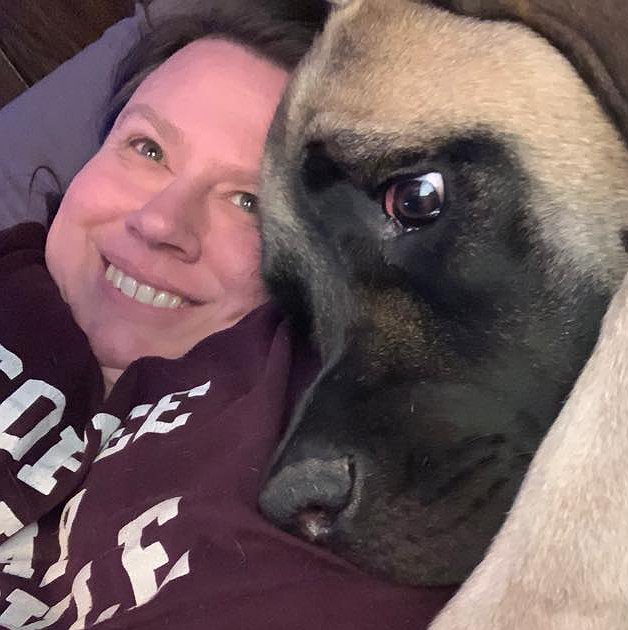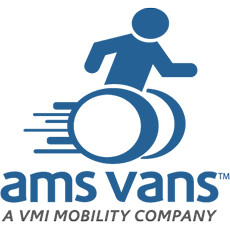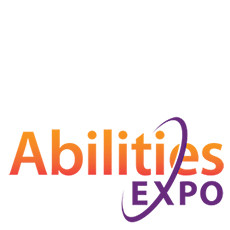
MobilityWorks
Accessibility for all: Helping people connect with who and what matters most
Searching...
No results found. Please try modifying your search.
In the fall of 2018, Jennie was suddenly struck by an incredibly painful and debilitating illness that changed our lives forever. We were trying to launch our own business, and Jennie had just quit her job a few months prior to make this dream of ours a reality. Everything seemed to be going really well until our working vacation to New Jersey and New York to visit Jennie’s family and collect pictures, stories, and experiences for our fledgling website. In the blink of an eye, our world changed.
It hasn’t stopped changing since the fall of 2018, and now we find ourselves in the unique situation of needing to purchase a vehicle that can be modified to transport a very complicated wheelchair that will help Jennie regain some level of freedom that has been lacking for the last year or so of her illness. Here is our story.
Jennie has been severely limited by her medical condition, Reflex Sympathetic Dystrophy. When it first hit, we had absolutely no clue what had happened. Jennie thought she slept wrong and pulled her neck or her shoulder occasionally. She blamed the pillow, lifting something heavy, all sorts of things that seemed to make sense in the moment. This went on for nearly a year when her condition suddenly went from stage one to stage two. The major symptom of the arrival of stage two was horrific pain that kicked off while we were on vacation in the fall of 2018. This progressed to where Jennie was randomly passing out when she would look to various directions, and when she was in too much pain. We had 2 scary months, culminating in Lynn calling the Mayo Clinic in Rochester, Minnesota and begging them to take Jennie’s case. We found out quickly Jennie likely had Complex Regional Pain Syndrome (CRPS), but more specifically, she has the version that was called Reflex Sympathetic Dystrophy (RSD). Over many months, it was solidified into a diagnosis of Reflex Sympathetic Dystrophy, stage 2. Stage 2 does not go into spontaneous remission, and the typical life expectancy from the onset of stage 2 is currently an average of 5 years. Mayo Clinic is working hard each and every day to help us beat those odds for Jennie. While we first were able to start to get it under better control, a second major issue cropped up.
After multiple specialists at Mayo Clinic in Rochester, Minnesota were stumped, we finally had a breakthrough and discovered Jennie has a variant of Rheumatoid Arthritis. It flared into horrific effect, likely due to the systemic swelling due to the RSD. Jennie has a number of other medical illnesses, but the most significant to her day to day functioning are the Reflex Sympathetic Dystrophy (RSD), the Rheumatoid Arthritis (RA), and a post-surgical complication.
After her last surgery to try to help the RSD, she ended up with a leak of her spinal fluid due to the surgeon trying to get the lead for the neurostim that helps to control her pain threaded from her mid-back all the way up to the c2 vertebra in her neck. She had the surgery once before already, but the leads were pulled free when she was ill and hospitalized less than a year after the first surgery. We are lucky the leak was the only negative outcome of the surgery, as the potential for total paralysis was a very significant possibility. The leak has slowed significantly, but since it is so close to her brain, any options other than letting it close slowly on its own run very significant risks for blood clots, possibly including in her spinal cord. Due to this, Jennie needs to spend the vast majority of her time semi-reclined, as the longer she is upright, the more her brain sags and puts pressure on nerves surrounding the brain. This pressure creates a debilitating headache, and in Jennie’s case triggers off her body’s strange reaction to pain. This means she will start losing the ability to thermoregulate, her hand will begin tremoring, and if the pain is not resolved, she can start having what look like seizures and the left side of her face will go slack and look like she is having a stroke. These things happen any time her body is in more significant pain than her base-line level of pain. This, along with all the medications to give Jennie some relief from the pain, means Jennie’s world has narrowed down to the confines of our bedroom, a very limited amount of time in other rooms of the house, and a worsening of the RSD and the RA (any amount of inflammation and additional pain can cause the two to flare and spiral over and over).
Jennie is in the process of getting a super cool wheelchair (YEA!), but the wheelchair is so advanced, it won’t fit in our Subaru Outback (BOO!). We can’t load it onto one of those bumper hitching posts to transport it around because The doctors, physical therapists, and mobility experts are very insistent that Jennie be able to be transported *IN* the wheelchair, inside the vehicle. This very specific wording also negates the option of adding a trailer hitch to the Outback and using a covered trailer for transporting the chair. Due to all of this, a vehicle that can transport the wheelchair (in Jennie’s very specific positioning requirements) is required. After much research, our options are limited to “mini-vans” and “full size vans.” Jennie found “mini-van” to be in the category of “hideous, but acceptable.” She’s not really very thrilled at the need for the wheelchair, let alone the need for a “Hockey Mom grocery getter” to transport it. She is, however, excited about the possibility of being able to get out of the bedroom and the house more!
Getting access to this wheelchair doesn’t just mean Jennie can spend more time in the rest of our house chatting with the Parakeets Indy, Stitch, and Pika. It doesn’t just mean the ability to visit the Mystery Snail juveniles growing up in the living room fish tank. What it means to Jennie is she will no longer be bound by needing to stay within range of her bed! The chair will be able to hold her at a comfortable position if she’s too tired to keep walking down by the Mississippi River while hunting for Pokémon (something we haven’t been able to do for over a year now). It will mean she can go to the pet store, and maybe even pick out a new fish for her bedroom aquariums. It means less recovery time when we need to take a trip down to Rochester to meet with another specialist, since she can kick back and relax on the rides there and back. This is something she cannot in our current Outback. Getting the chair opens Jennie up to the entire upstairs of our home. Getting the van opens the world up to Jennie.
But it’s not all sunshine, rainbows, and walks/rides along the Riverwalk in downtown Hastings:
Just before the appointment to get Jennie fitted for the wheelchair and begin the ordering process, Jennie’s RA medications began to fail again. We’ve been through this twice before, so as the pain flares started spiraling between her joints and the area around her neck/shoulder in which her RSD impacts her the worst, Lynn recognized the pattern from the last time this happened. Lynn reached out to Jennie’s medical team when the pain reached the point where she couldn’t use Holly the English Mastiff Service Dog to help her get to the bathroom and back. The pain kept her from even standing next to her big fish tank and “high-fiving” the snails with a finger for even a few moments. She couldn’t even reach to feed the aquarium that lives on her nightstand. The answer from the medical team was frightening: They wanted Lynn to pack Jennie into the Outback and bring her in for an emergency appointment with a different provider since her primary was out on vacation and wouldn’t be back for 6 days. There was no way Lynn could get Jennie to the dining room, let alone out the garage door, down the steps, the few steps to the Outback, and into the car, let alone get her through the 30 minute ride to the doctor. The triage nurse agreed to try sending her primary a medical message on the Hail Mary hope we could get him to call in a prescription for a steroid to bring down the swelling. If he didn’t respond within the hour in order to get Jennie any help at all, we would need to call an ambulance and have her taken to St Mary’s hospital in Rochester, MN. It’s about an hour and a half to St Mary’s, and it would have to be by ambulance because there was absolutely no way to get her to the car, let alone for her to ride upright for the hour and a half to get her there.
Even if we get the chair, and tried to use the medical transportation to get her to doctor’s appointments, lab blood draws, and all the various therapy required to keep her alive and her quality of life the best we can, those medical transportation services require 3 business days to schedule a pickup. Once we did set one up, they give us a 3 hour window in which they will pick her up for her appointment, and a 3 hour window in which they will pick her up to return her home for her appointment. They will not take her directly to her appointment, nor return her directly home. They will stop to pick up others, and drop others off, making a simple trip down to Cannon Falls for a blood draw for labs require all day to schedule the transportation, and that’s not a guarantee they will get her to her appointments on time. These trips cannot spontaneously occur when she’s having a good day and wants to go see the River, or take a trip to Level Up Games to see what new games have come in. She can’t decide to ride along to pick up her prescriptions from the pharmacy or go to a grocery store to pick out food she might like to have made for her. These are things Jennie hasn’t been able to do recently, but we’re hopeful with the new chair and the ability to transport the chair, Jennie will be able to do these things once more.
So, that is why we need your help. This minivan will give Jennie back some semblance of a life beyond the four walls of our house… but it also means in an emergency, we can get her to the doctor’s office or to the urgent care center. We can take her to have her glasses adjusted. We can even just go for a car ride, something we haven’t been able to do for at least a year.
Help Hope Live is a 503.c7, meaning your donation to this fundraiser to try to make an accessible van affordable for us is tax deductible. They verified Jennie’s medical condition, and our financial need, before they would agree to help us fundraise to help with the cost of the minivan. Their 503.c7 status means you can even use employer matching programs with your donation as well.
After several weeks of research, running numbers, and discussing this situation with various family, friends, and experts, it has become clear we cannot make this minivan a reality for Jennie without some help.
Thank you for taking the time to read this fundraising campaign story, and for considering helping us through sharing our story and donating if you can.
~ Lynn Mattila
On behalf of Jennie Mattila and Holly the English Mastiff Service Dog
Loading Images
Make checks payable to:
Help Hope Live
Note in memo:
In honor of Jennie Mattila
Mail to:
Help Hope Live
2 Radnor Corporate Center
Suite 100
100 Matsonford Road
Radnor, PA 19087
Donor preference is important to us. Please specify in writing if you wish for your name or donation amount to be kept private.

Subscribe to this campaign to receive updates.

Accessibility for all: Helping people connect with who and what matters most

Building leading-edge mobility products

One of the largest mobility dealers in the U.S.

Consult with specially-trained pharmacists, get your medications for pickup or delivery and more

All news, and all that matters to you

Your first step to optimized communications

The event for the disability community

Born to connect, empower and inspire the rare disease community.

A mobility dealer for wheelchair accessible vehicles and adaptive equipment